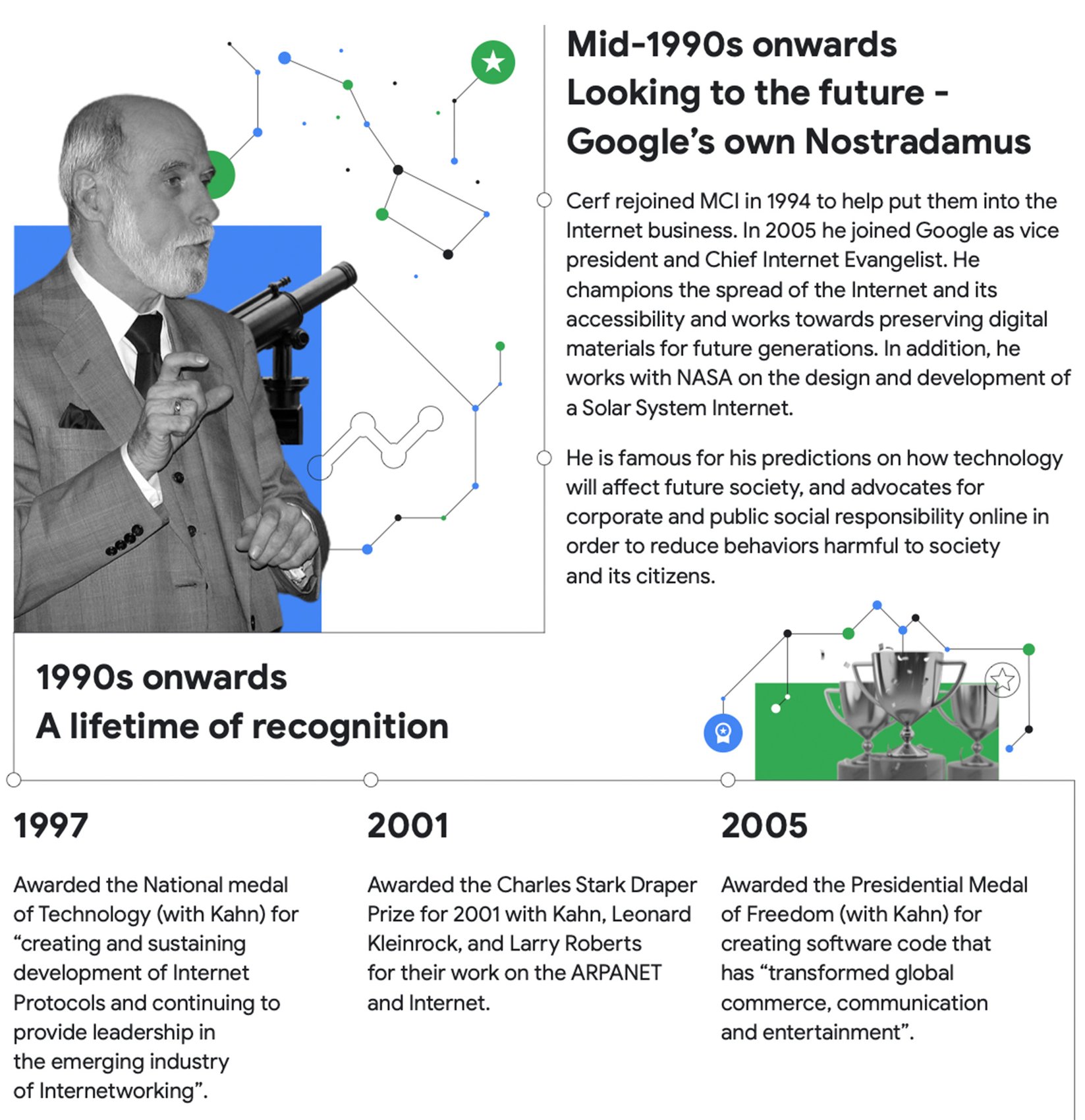Vint Cerf on 50 years of the Internet: "We still have a lot of work to do."
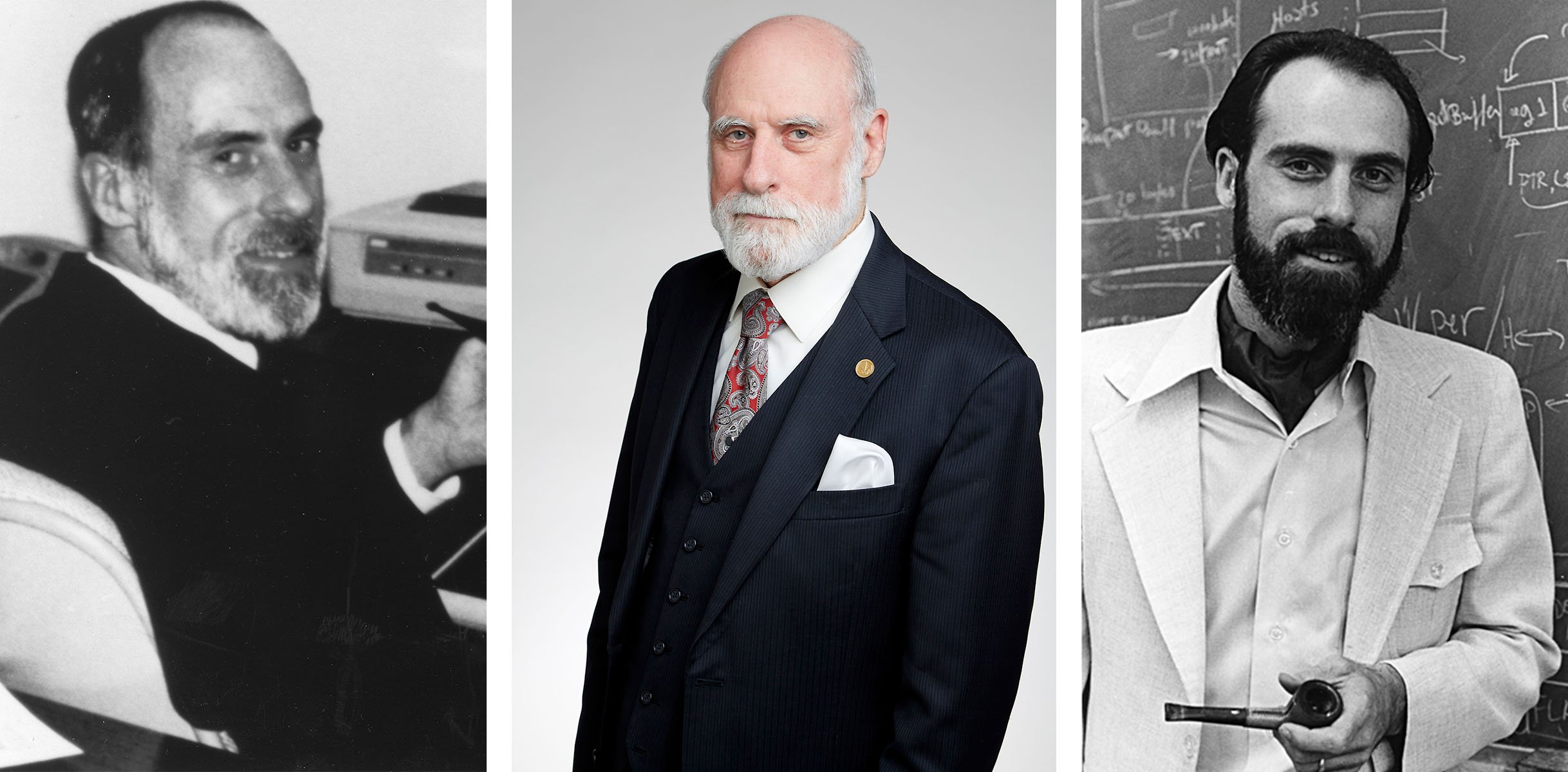
Shubhika Taneja
Multicloud Editor
One of the "fathers of the Internet," Vint Cerf has been shaping technology for half a century. Here he discusses his legacy, the importance of accessibility, and what's next for, cloud, AI, and quantum computing, too.
An interconnected network of networks. Or, perhaps, an Internet. In the late 1960s and early 70s, that was the goal of the United States Department of Defense as it funded research and development of the early era of computers. The goal was to create a network of computers whose resources could be shared by researchers funded by the Defense Advanced Research Projects Agency. Later it was thought that such a system could work for command and control, helping to fight the Cold War and advance American interests across the globe.
At the time, computers were the size of buildings. The Department of Defense had spent millions of dollars over the 20 years between 1950 and 1970 helping fund development of technology. The most famous and perhaps even infamous example was SAGE — the Semi-Automatic Ground Environment — that was supposed to be a network of computers and radar systems spread across North America to detect Russian bombers crossing the Arctic. The computer to perform that task was called AN-FSQ7, developed by researchers at MIT and around the country, and later built by IBM. It was SAGE that would eventually ask Matthew Broderick in the 1983 movie WarGames, “would you like to play a game?”
It was into this environment that researchers from universities across the country stepped in to help start connecting the burgeoning ecosystem of computers. Many of them had little interest in the particular desires of the Department of Defense, but rather were fascinated with the potential and power of networked computing. One of them, Vint Cerf, had done work on computers for the Defense Department’s Advanced Research Projects Agency (ARPA), while at UCLA after getting his undergraduate degree in Mathematics at Stanford, and then going to work for IBM. Going back to Stanford in 1972 to teach computer science and electrical engineering, Cerf joined the project for the internetworking of computer networks.
And the Internet came to be.
In 1972, Dr. Cerf, working with colleague Robert Kahn (whom he met while at UCLA and who was then at ARPA), developed the Transmission Control Protocol (TCP), designed to facilitate the interconnection of packet-switched networks. TCP became the main protocol of the new Internet Protocol. It evolved to become TCP/IP (Internet Protocol) and is what has made the network of networks possible.
Dr. Cerf has spent the last 50 years as a champion of technology and the Internet. For his work, Cerf has received many accolades with Robert Kahn including the U.S. National Medal of Technology in 1997, the U.S. Presidential Medal of Freedom and the ACM Alan M. Turing Award in 2005, the Japan Prize in 2008, and the Queen Elizabeth Prize for Engineering in 2013 In 2005, Dr. Cerf joined Google as Chief Internet Evangelist, a title he still holds.
Google Cloud has spent 2023 celebrating 50 years of “the Vinternet.” In a live Twitter Spaces conversation earlier this year, Dr. Cerf spoke with Google Cloud’s Shubhika Taneja about the lessons he’s learned from developing the Internet, the new era of artificial intelligence, his vision for the technology of the future, and the importance of accessibility. Read the Q&A below for some fascinating insights and anecdotes from Dr. Cerf’s 50 years as a champion of technology and innovation.
Editor’s note: this transcript has been edited for length and clarity.
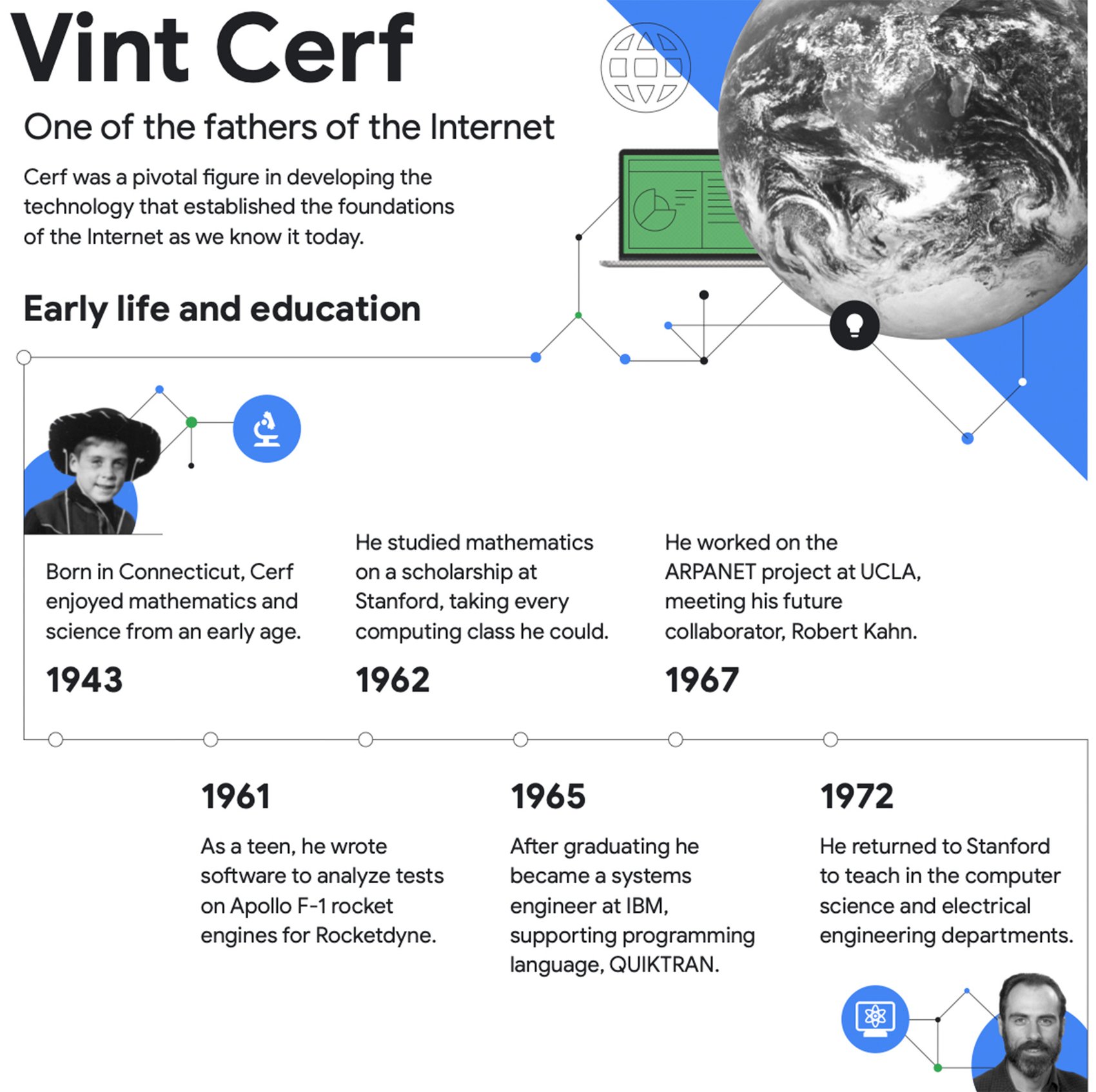

Early life and interests
Shubika Taneja: What was your childhood like? Were there some early interests or incidents that may have shaped your journey as a scientist and as an inventor?
Dr. Vint Cerf: I got interested in science and mathematics pretty early, when I was 10 years old. I complained to my math teacher that there must be more to mathematics than addition, multiplication, division, and fractions. He said yes and he gave me a seventh grade algebra book. I went home and answered all the problems over the summer and got very, very excited about how much fun they were, especially the word problems. Because they were like little Agatha Christie novels where you had to go figure out what was X.
Around that same time, my parents got me a chemistry set. This was 1953. In those years you got some really fascinating chemicals that they probably can't get today. One of them was potassium permanganate. When you mix that glycerin, it is hypergolic. It erupts into flame on its own. We used to make a little Plaster of Paris volcanoes, and we put in the glycerin, and the potassium permanganate and powdered magnesium, and powdered aluminum, and powdered iron, and watched the thing go up.
I remember one of the first books I read was most interesting to me called “Microbe Hunters” by a guy named Paul de Kruif. It told the story of how Antonie Philips van Leeuwenhoek, a Dutch lensmaker, invented one of the first microscopes. I was certain I wanted to go into some kind of science. I thought for a while that I was going to be a particle physicist, but math really grabbed my attention, and eventually later on in my career, computing. I ended up going down the computing path and not long after doing my undergraduate work, I went to work for IBM. I got drawn into that and of course I was permanently infected with networking while at UCLA and that's been the story of my career.
Developing the internet
You have seen the evolution of technology through several decades and the mind-blowing disruptions that have happened in that time. Cloud computing has truly transformed business and the various applications of the Internet. It is incredible what businesses are achieving today. Is this something that you saw coming? What were you thinking when you helped invent the Internet with your colleague, Robert Kahn? And what do you think about the future of the Internet in a world where artificial intelligence and machine learning are becoming increasingly powerful?
When Bob and I started working on the Internet, we were doing this for the Defense Department, the Advanced Research Projects Agency [now called DARPA], which meant that we were designing something that was intended to be used for command and control. That was our primary objective. How do we hook all these different kinds of computers and different kinds of networks together? A challenging design problem because it involved very different kinds of packet-switched networks.
The people who were designing and building it were largely graduate students, or people working in research laboratories. We were using the system as we were building it. One of the earliest applications was remote access to other people's computers run programs and to transfer files back and forth. In 1971, networked electronic mail was invented by one of our colleagues Ray Tomlinson. He was the guy that selected the @ sign to separate the personal identifier from the host identifier. Those applications told us first that there was a lot of utility to connecting computers together. But the second thing that told us is that there was a social component to what we were doing.
Very quickly after email was invented, people started building mailing lists so they could send email conveniently to multiple parties. The first list that I joined was called Sci-Fi Lovers because we all read science fiction and we argued who was the best author. Then the second mailing list I joined was called Yum Yum. That was a Stanford mailing list that evaluated restaurants in the Palo Alto area. Eventually, I think it expanded to include San Francisco and San Jose. Very early on the social components were quite dramatic. Powerful.
The other thing that's worth pointing out is that because this was originally intended for command and control, we knew at the beginning of the design effort that we needed to support packetized voice and packetized video, as well as access to data and computing resources. It was a very ambitious project driven initially by Defense Department needs. But by 1989, we were beginning to see applications in the private sector. We should recall that Tim Berners-Lee released the World Wide Web in December of 1991 from his post at CERN in Geneva. And that, of course, triggered an enormous avalanche of content production on the net. There was so much stuff, nobody could find anything, which meant search engines had to be invented. All of that suggested that there was a lot of potential in the private sector and in the public, as well as for the Defense Department and for the government.
The future of the Internet
What are some of your hopes and dreams for the future of the internet?
I see it as an enormous platform with powerful computing capability, and a huge capacity for people to share what they know; to find things, and discover things that would help them. And of course, with the most recent machine learning tools coming, we've had benefits from them in the form of machine translation, or speech understanding, speech recognition, speech generation, overcoming literacy problems by allowing people to speak in their native languages rather than having to type something. These tools have already shown enormous benefit and of course, they're accessible through the Internet from literally anywhere that you can get a signal. We still have a lot of work to do to refine the tools and their controls to make sure that people who are using these things get what they are hoping for, which is a powerful motivation to analyze machine learning and to apply it safely and effectively.
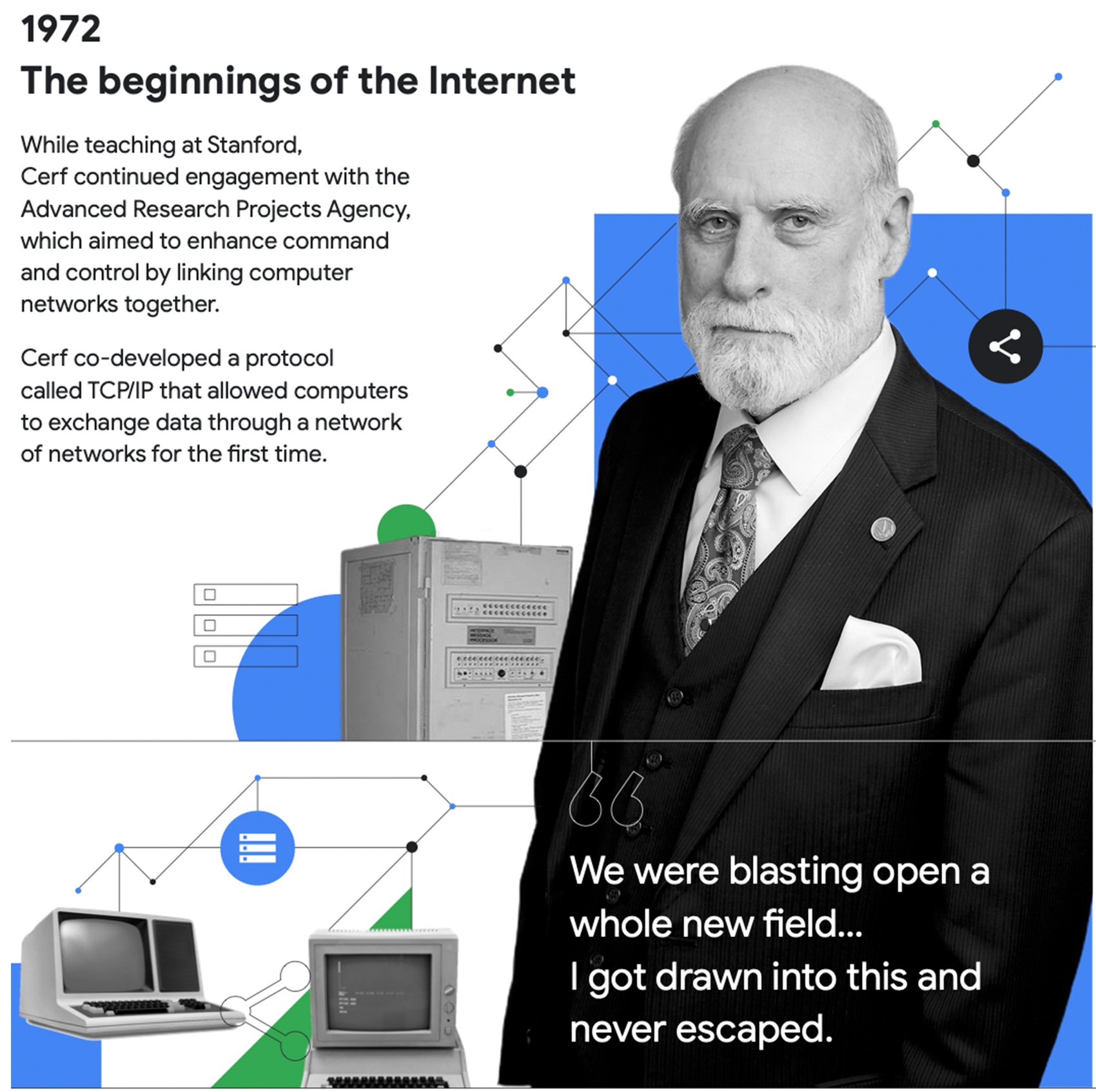

The importance of accessibility
I know that some of our personal experiences are the strongest motivators to bring about change. What are your thoughts on the importance of accessibility in the digital world and how it has played a role in your life as a technology pioneer?
Well, there are two things for me that are related to accessibility. One of them is that I've been wearing hearing aids since I was 13. I was born six weeks premature in 1943 and they put me in an oxygen tent. By the time I was 13, I was wearing hearing aids, and I've been wearing them ever since. The good news, of course, is that even though my hearing loss gets worse over time, the hearing aids have gotten better, and so I have been able to function in a hearing world.
A more dramatic demonstration of technology and accessibility is my wife's story. She was born with normal hearing, but when she was three years old, she had spinal meningitis, which destroyed the ciliar hairs inside the cochlea, and rendered her profoundly deaf. She lived in a world of silence. And then she got on the Internet around 1996 and started to ask about cochlear implants. Someone in Israel aimed her at the Johns Hopkins University Hospital in Baltimore. She was tested to see if she was a candidate for cochlear implantation and they said that she was, so she had the implant done. It was an outpatient operation.
The technology uses a speech processor which feeds the electrical signals into the auditory nerve which the brain interprets as sound. After they programmed the speech processor, she picked up the phone and called me for the first time in our 30 years of marriage. It wasn't a deep conversation but it was certainly a profound moment in our married life. Oh my, I discovered that I had a 53-year-old teenager at home! I couldn't get her off the phone. She'd take any calls, at any time.
She called the library and she said, can I get recorded books for the blind and they said, sure, no problem. Then they said you're blind, right? And she said no, I'm deaf. And then there's this long pause where they're trying to figure out how that's going to work. She listened to about 500 books on tape and now recognizes accents and she notices when people are mispronouncing words. So for her, she experiences the hearing world in a very dramatic way. I am convinced that these kinds of neural implants will not only work well for people with hearing impairment, but also for people with vision problems and someday also, with motor problems, that might be the result of a spinal injury.
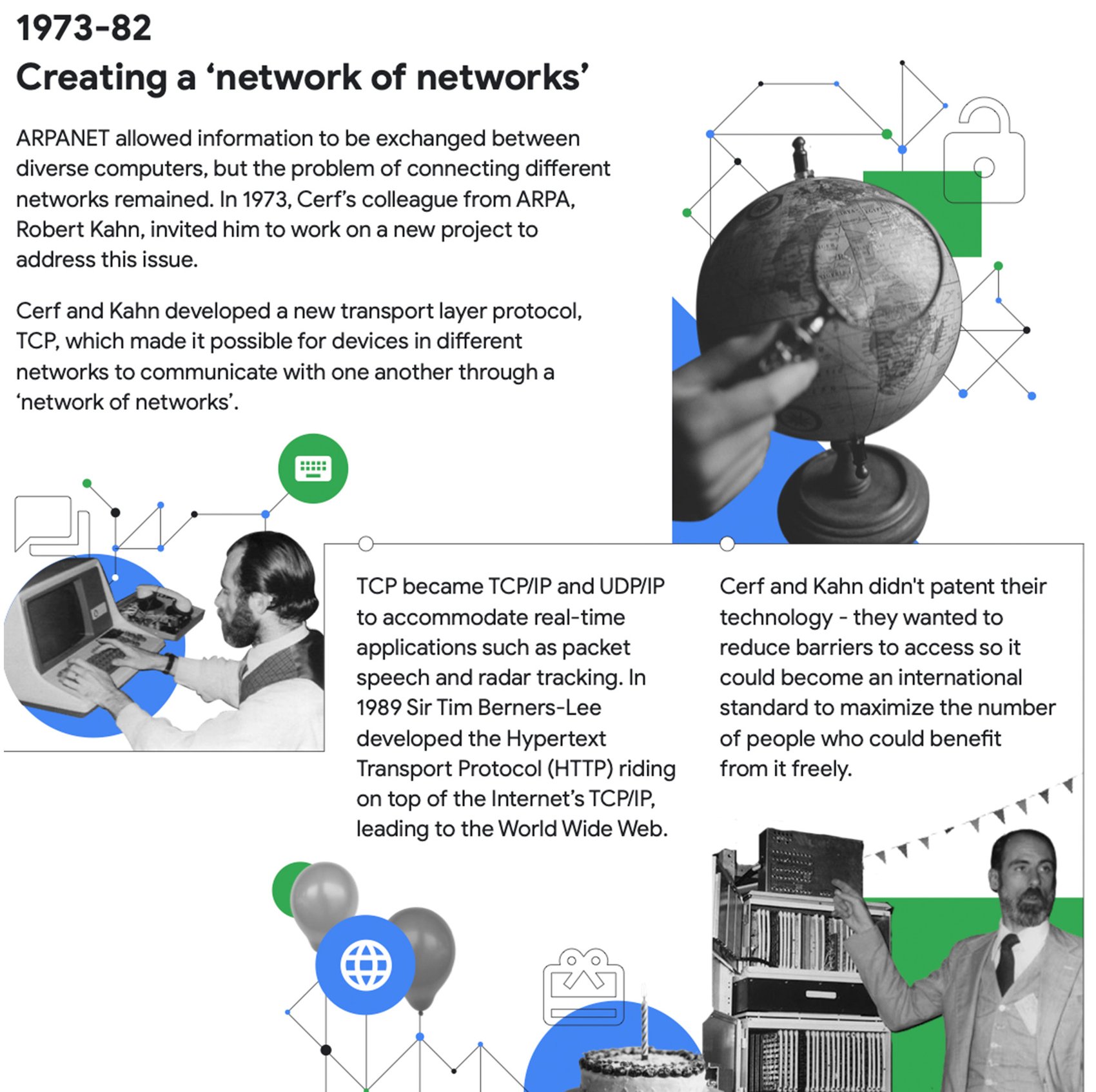

Technologies of the future
I'm sure you're asked about your vision for technologies, like Generative AI, 5G, quantum computing. Those are just the top three that I can think of which now have the potential to be implemented at scale, with the power of the cloud, that will disrupt and shape our future. What can we expect? What are some of the challenges and opportunities, especially for the cloud providers, during this time of new innovation?
The first thing I would say is expect AI applications to surprise us with their capacity to carry out useful information retrieval. At the same time, they've also shown a proclivity for generating nonsense. Or, as they say, hallucinations. We have more to do to make more reliable, useful AI-based tools. On the 5G side, of course, it’ll enhance access to the Internet at higher speeds. 6G is coming. We also have low Earth orbiting satellites to make it easier for people to access the Internet even from places where the Internet is very unlikely to have already been installed, including all of the oceans.
We still have much to do in the quantum space, not only on the physical implementation of qubits [quantum bits, the computational unit of quantum computing], but we also need to explore what algorithms can be used to solve problems that would otherwise be out of reach of conventional computing. The cloud space, of course, allows anyone to get access to those tools from almost anywhere. It's even possible that we will see the quantum Internet evolve to support entanglement of multiple quantum computers, using entangled photons that can be generated on one machine and then sent to another one. This could maximize the number of total qubits to apply to a given computation.
Those are just a few of the things that I see coming. If we go a little further out, we actually have a team at the Jet Propulsion Lab and other labs at NASA and other national space agencies that have been working since 1998 on an interplanetary extension of the Internet. This is not not science fiction. This is serious engineering. New protocols have been developed. They've been standardized in the IETF [Internet Engineering Task Force], the Consultative Committee on Space Data Communications (CCSDS), and the Organization for International Standardization (ISO) with multiple implementations of what's called the Bundle Protocol suite for interplanetary communication. They're being tested on the International Space Station.
I'm looking towards the remainder of this decade as a super exciting time for new technologies to come along both in the networking space, and in the computing space. And I haven't even begun to say anything about the Internet of Things, and all these devices that will be programmable and networked in order to theoretically make our lives a lot easier.
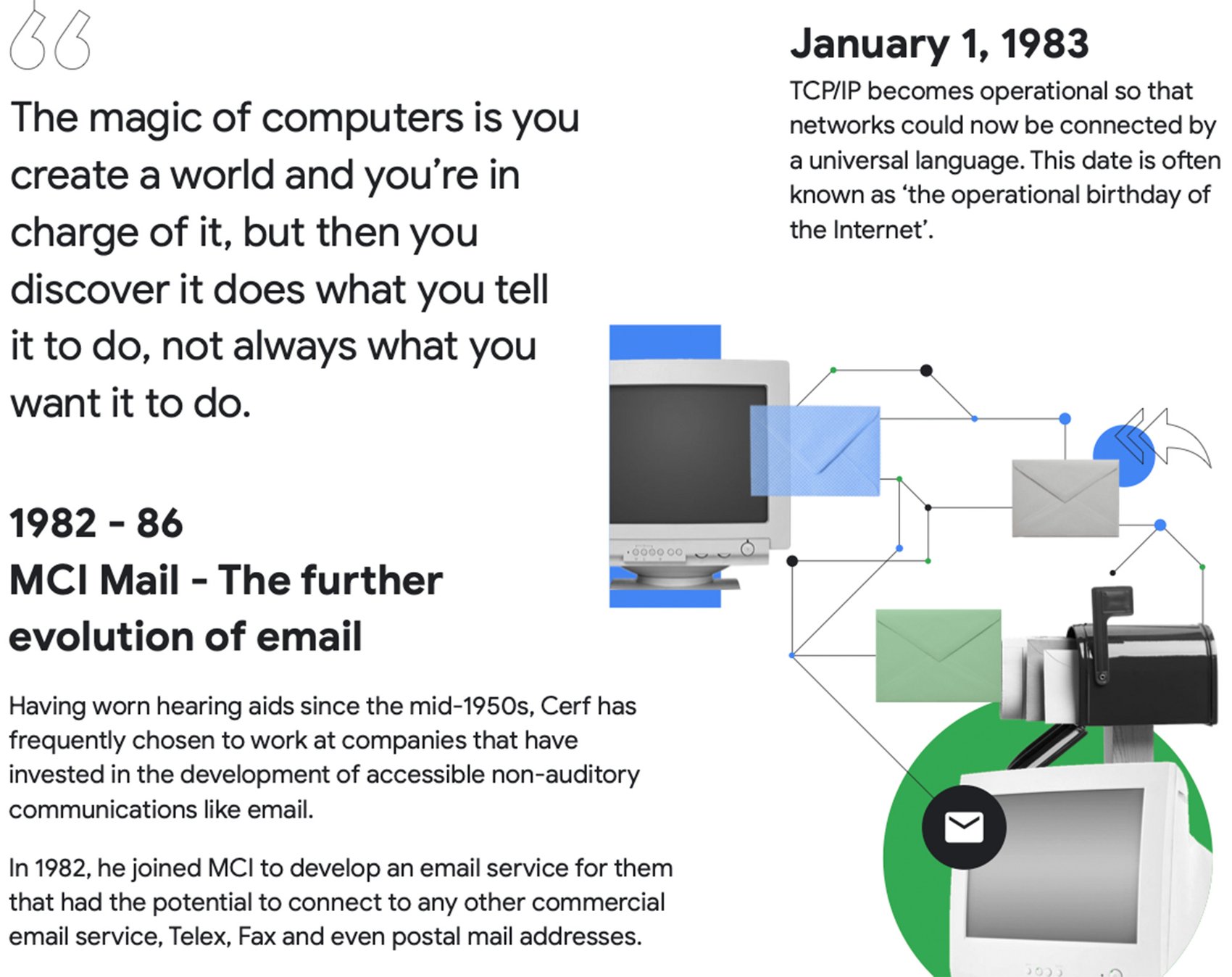

Advice for future innovators
What are some of the off the beaten path things that you have learned in your career that you would like to share?
One of the most valuable things that Google and others can do is to provide tools. To make it possible through the Internet to allow our developers to invent new applications. The more we can empower them, the more they will empower us. And so that's a major focus of attention for Google and others. Developers are the ones that literally create these new conveniences for us. Of course, I think they also bear very significant responsibility, just as we do at Google, and that's to make sure that their applications are safe to use. To invent, and to protect.
A good deal of what we do these days is to try to make sure that our users have tools to protect themselves. We provide cryptographic capabilities for the web using HTTPS, for example and the QUIC protocols. The developer is really at the forefront of new application spaces and, frankly, new businesses that arise as a consequence of what they've been able to do. I mean, think about Youtube, which started out as an experiment to see whether video could be shared. Now, of course, we have a major application and a major business.
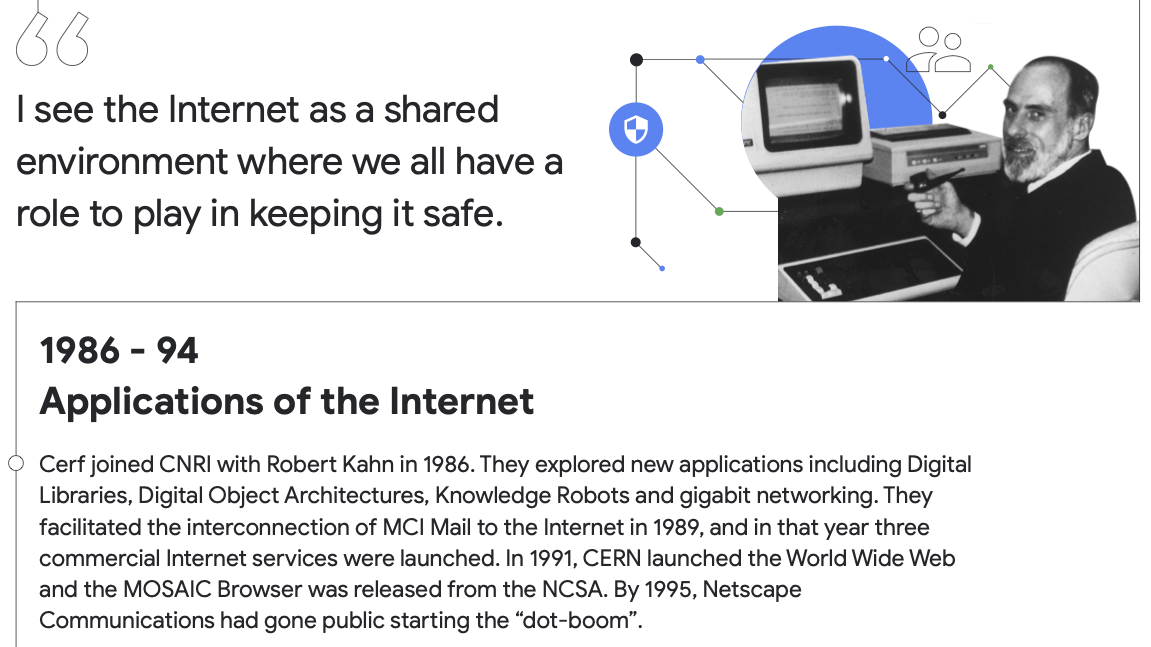

Are there other things that you envision happening in the next decade or so given the power of computing, with the power of cloud and technology?
I think to anyone who wants to imagine the future, all I have is to say “computational X for some value of X.” Whether X is chemistry, or astrophysics, or biology, or botany, or something else. We are at the point where our computational models are driving insight. Just think about it, the sequencing of DNA and then understanding of the variation caused by single nucleotide polymorphisms, or SNPs that distinguish one person from another. One species from another. We're learning so much right now.
I think if you really want to imagine the future just stick computation on the front end of anything, and you're off and running in thinking about what computers might do in order to increase our ability to understand the world around us.
From my point of view, we have plenty more to discover. Maybe one percent of all the applications of the Internet have already been built. There are still 99 percent percent to go. To say nothing of the fact that we know almost nothing about the universe we live in. All we think we know is that 70 percent of it is dark energy and 25 percent of it is dark matter and the rest is ordinary matter. We have labels, but we don't know what the first two are!
